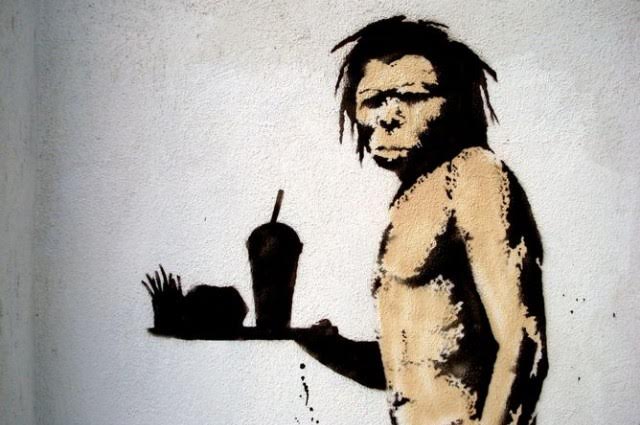PALEO: A modern diet fad rises in popularity and has its followers eating like our ancestors.
By Malik Alexander, Staff Writer
Much of the modern human diet leaves many with fried chicken and pizza Fridays, and while they may taste marvelous, your body just isn’t equipped to handle them. Before the introduction of processed foods and surprisingly unhealthy grains and dairy products, our metabolism had no food foes. Paleo, short for paleolithic, models itself after the consumption habits of our ancestors. The paleo diet is best explained by its media definitions: the caveman diet or the hunter-and-gatherer diet. Its cultural revival amongst health buffs and diet trendies began in the early 1980s with the the praise of Boyd Eaton’s M.D. investigative paper Paleolithic Nutrition: a Consideration of its Nature and Current Implications. The earliest humans were hunters and gatherers who ate what nature provided and nothing more. The diet is first and foremost a high protein diet. “Protein takes up 30% of the nutritional intake,” nutritionist and paleo advocate Dr. Loren Cordain stated. Along with fruits, a major part of the diet is high-fiber vegetables. With fats a necessary intake, healthy fats have made their stake in the paleo diet. This is where nuts, seeds and meats are introduced along with paleo-approved oils such as coconut and olive. A small scope for the paleo palate means much is left out. Dairy and grain products are strictly excluded. Many anthropologists and prehistoric nutritionists have found that these modern staples were not consumed; after all, the agricultural revolution would not be for centuries in the future. A huge difference between prehistoric nutrition and modern nutrition is the evolution of food production. Processed food products are also expelled from the paleo diet, due simply to the fact that cavemen didn’t have access to these cheap and readily available meal sources of modern innovation. There has been a sudden rise in the diet frenzy in the past five years, and the number of paleo dieters has increased exponentially.
The diet has been heavily researched and studied by dietitians, doctors and biologists who have found incredible health implications. James Coure Phd. , a dietitian, has found that the evolution of the human metabolism hasn’t “evolved significantly at all,” but with the integration of processed foods, grains and dairy products, there has been a booming increase in disease. Biochemist Robb Wolf found that the diet is an answer to maintaining heart health and to immune system efficiency. For those seeking to shed the pounds, the diet has responded kindly to weight loss. Much of the food that causes unhealthy weight gain is a prominent part of the modern human diet. The paleo diet, on the other hand, contains prime, necessary and healthy nutrition while lacking the fattening calories, useless carbs and processed food products that cause weight increase. Cutting out these products not only “increases metabolism but eliminates fattening foods,” Dr. Mark Sission states in his book the Primal Blueprint (2013). Studies at Stanford University have found that people who have been on the diet for more than a mere month have noticed changes in physical health including weight loss, energy increase, muscle production, clearer skin and even an overall increase in mental health.
The paleo diet has made its way onto Poly’s campus. Several students have taken the steps to a healthier, more fulfilling life. Itzel Crusoe (12) has been on paleo for almost six months now and has noticed major changes in health. “I’ve experienced improvement in the endurance of my cardiovascular system but also a growth in strength,” Crusoe expressed. This diet has been a struggle for some. Continuing three months now Ashley Lawson (12) can attest to the difficulties of the diet. “At first, the diet was hard because I had to completely change my eating habits,” Lawson stated. Danielle Oyama (11) also knows the struggles that come with such a restrictive diet. “When you go out to eat, there aren’t that many options, and being surrounded by those not on the diet is hard,” Oyama stated. There have been many students that have taken strides to becoming healthier individuals and experiencing the benefits that result from taking on the diet. Many began with aims to control or lose weight, but even after goals were achieved, many stayed on the diet as they began noticing the other benefits. “Weight loss was accomplished, but the benefits reach out so much more. I found a new passion for health that I never knew I had before,” Crusoe added. Students on our campus took it upon themselves to become healthier individuals and have recognized the power of paleo. Paleo is more than just a diet but a life choice. It is a revival of healthy dietary habits, ones that first sustained the human race and that the oldest humans understood.

